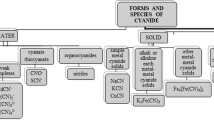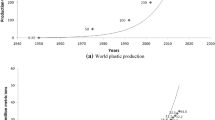Summary
Voluntary bystanders, simulating a situation of non-occupational exposure to Z- and E-1,3-dichloropropene (Z- and E-DCP), were exposed during field application of this nematocide in the Dutch flower-bulb culture. Environmental monitoring revealed that mean respiratory exposure concentrations of Z- and E-DCP varied from non-detectable levels to 1.12 mg/m3 8-h time-weighted average (TWA) for Z-DCP and to 0.91 mg/m3 8-h TWA for E-DCP. Biological monitoring was executed by determining urinary mercapturic acid metabolites of Z- and E-DCP according to a method recently validated in occupationally exposed applicators. A linear relationship between respiratory exposure to Z-and E-DCP and the urinary excretion of both mercapturic acids was observed in bystanders. Dermal uptake did not contribute significantly to the internal dose of Z- or E-DCP. The urinary mercapturic acid of Z-DCP was a more sensitive parameter for the detection of exposure than was respiratory air monitoring. In future studies it would be worthwhile to determine the extent of exposure of real bystanders to DCP on the basis of urinary mercapturic acid excretion.
Similar content being viewed by others
References
Brouwer DH, Brouwer EJ, Vreede JAF de, Welie RTH van, Vermeulen NPE, Hemmen JJ van (1991) Inhalation exposure to 1,3-dichloropropene in the Dutch flower-bulb culture: I. Environmental monitoring. Arch Environ Contam Toxicol 20:1–5
Brouwer EJ, Evelo CIA, Verplanke AJW, Welie RTH van, Wolff FA de (1991) Biological effect monitoring of occupational exposure to 1,3-dichloropropene: effects on liver and renal function and on glutathione conjugation. Br J Ind Med 48:167–172
Buurveld HA, Dost H, Hoorn R van der (1988) Grondontsmettingsmiddelen en hun verspreiding door de lucht. (in Dutch) In: Serie studentenverslagen 39. Interfacultaire Vakgroep Energie en Milieukunde, Rijksuniversiteit van Groningen
Frank R, Campbell RA, Sirons GJ (1985) Forestry workers involved in aerial application of 2,4-dichlorophenoxyacetic acid (2,4-D): exposure and urinary excretion. Arch Environ Contam Toxicol 14:427–435
Hill RH, To T, Holler JS, Fast DM, Smith SJ, Needham LL, Binder S (1989) Residues of chlorinated phenols and phenoxy acid herbicides in the urine of Arkansas children. Arch Environ Contam Toxicol 18:469–474
Hsu P, Wheeler HG, Camann DE, Schattenberg HJ, Lewis RG, Bond AE (1988) Analytical methods for detection of nonoccupational exposure to pesticides. J Chromatogr Sci 26:181–189
Lewis RG, Bond AE, Fitz-Simons TR, Johnson DE, Hsu JP (1986) Monitoring for non-occupational exposure to pesticides in indoor and personal respiratory air. Presented at the 79th annual meeting of the Air Pollution Control Association, Minneapolis, Minnesota, June 22–27
Matsumura F, Madhukar BV (1980) Exposure to pesticides. Pharmacol Ther 9:27–49
MJPG (1990) Beleidssamenvatting meerjarenplan gewasbescherming. In: Meerjarenplan Gewasbescherming (in Dutch). Ministerie van Landbouw, Natuurbeheer en Visserij, Den Haag
Ohe T (1979) Pentachlorophenol residues in human adipose tissue. Bull Environ Contam Toxicol 22:287–292
Onkenhout W, Mulder PPJ, Boogaard PJ, Buys W, Vermeulen NPE (1986) Identification and quantitative determination of mercapturic acids formed from Z- and E-1,3-dichloropropene by the rat, using gas chromatography with three different detection techniques. Arch Toxicol 59:235–241
Osterloh JD, Wang R, Schneider S, Maddy K (1989) Biological monitoring of dichloropropene: air concentrations, urinary metabolite, and renal enzyme excretion. Arch Environ Health 44:207–213
Sangster B, Wegman RCC, Hofstee AWM (1982) Non-occupational exposure to pentachlorophenol: clinical findings and plasma-PCP concentrations in three families. Hum Toxicol 1:123–133
Vos RME, Welie RTH van, Peters WHM, Evelo CTA, Boogaards JJP, Vermeulen NPE, Bladeren PJ van (1991) Genetic deficiency of human class mu glutathione S-transferase isoenzymes in relation to the urinary excretion of mercapturic acids of Z- and E-1,3-dichloropropene. Arch Toxicol 65:95–99
VROM (1988) Ministerie van Valkshuisvesting, Ruimtelijke Ordening en Milieubeheer, Den Haag. Bijlage bij de antwoorden op de vragen van de Leden der Kramer Eisma en Tommel over concentraties van dichloorpropeen en methylisothiocyanaat in de lucht. (in Dutch) Publication 2888901550
Welie RTH van, Duyn P van, Vermeulen NPE (1989) Determination of two mercapturic acid metabolites of 1,3-dichloropropene in human urine with gas chromatography and sulphur-selective detection. J Chromatogr 496:463–471
Welie RTH van, Duyn P van, Brouwer DH, Hemmen JJ van, Brouwer EJ, Vermeulen NPE (1991) Inhalation exposure to 1,3-dichloropropene in the Dutch flower-bulb culture: II. Biological monitoring by measurement of urinary excretion of two mercapturic acid metabolites. Arch Environ Contam Toxicol 20:6–12
Author information
Authors and Affiliations
Rights and permissions
About this article
Cite this article
van Welie, R.T.H., van Duyn, P. & Vermeulen, N.P.E. Environmental and biological monitoring of non-occupational exposure to 1,3-dichloropropene. Int. Arch Occup Environ Heath 63, 169–173 (1991). https://doi.org/10.1007/BF00381564
Received:
Accepted:
Issue Date:
DOI: https://doi.org/10.1007/BF00381564




